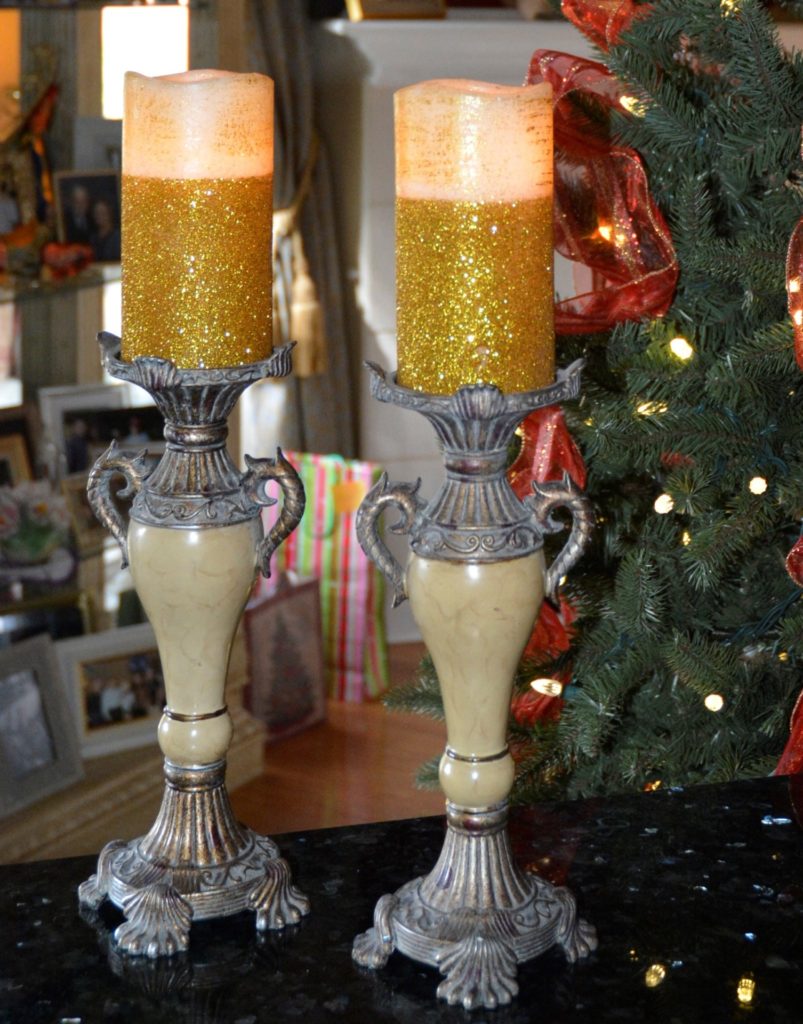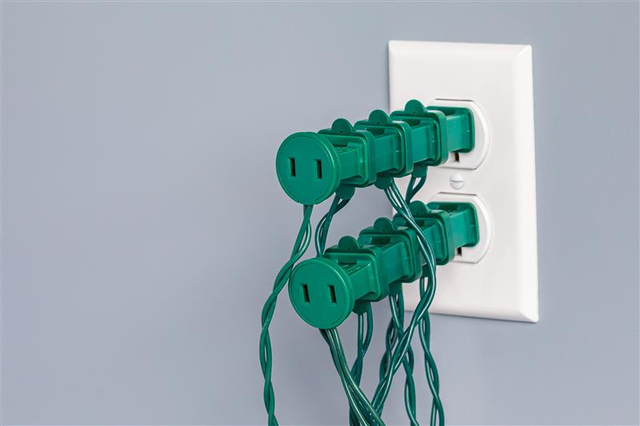Common causes of household fires during the holidays
Rekindle interest in home fire safety during the holidays; protect from holiday disaster
Although the holidays are supposed to be a time of joy, the season also brings increased potential fire dangers to the home and its inhabitants, said Texas A&M AgriLife experts.
“Fires are among the most common home-related dangers to be aware of during the holidays,” said Joyce Cavanagh, Ph.D., Texas A&M AgriLife Extension Service disaster assessment and recovery specialist, Bryan-College Station.
The National Fire Protection Association, NFPA, has identified Christmas Eve, Christmas and New Year’s Day as the three days of the year when most candle fires occur.
Cause one: Open flames and lit candles
“Candle fires, electrical fires and cooking fires are the types of fires that frequently occur during the holidays,” Cavanagh said.
Some tips to help avoid candle and electrical fires are:

— Keep candles at least 1 foot away from flammable items or surfaces.
— Do not put candles directly on surfaces. Use a sturdy candle holder with a drip plate for wax.
— Blow out candles when you leave the home or go to bed. Avoid using candles in the bedroom or other rooms in which people may fall asleep.
— Replace candles before they burn all the way down or before the flame gets too close to the holder or bottom of the container.
— Keep lit candles in sight and away from any areas where they may possibly be knocked over.
— When decorating, use electric lights that have been tested by an independent testing laboratory and replace old or worn-out lights.
“In the event of a power outage, use flashlights or other battery-powered lighting as opposed to candles,” Cavanagh said.
Cause two: Christmas trees and electrical wiring
Christmas tree fires are rare, but when they do occur, they can be deadly, according to NFPA. They also have the potential to do serious damage to the home or cause injury to those inside.

“Electrical problems are the primary cause of about half of all Christmas tree fires,” said Karen Stafford, Texas A&M Forest Service statewide prevention coordinator, Lufkin.
Stafford said some tips for avoiding Christmas tree fires include:
— If using a live Christmas tree, select one with fresh, green needles that do not fall off when touched.
“Make sure there is always water in the tree-stand reservoir,” Stafford said. “A well-watered tree burns at a much slower rate compared to a dried-out tree, which can burn up completely in very short time.”
— If purchasing an artificial tree, choose one labeled “fire-resistant.”
— Use Christmas tree lights that are Underwriters Laboratory-rated or otherwise independently tested interior lights.
“Using LED lights is also better option because they generate less heat than filament bulbs,” Stafford said.
— Turn off Christmas tree lights when leaving home or going to bed.
— Never use lit candles as Christmas tree decorations.
— Locate your Christmas tree at least 3 feet away from any heat source, such as heaters, furnaces, fireplaces, candles or other heat sources
— Make sure your Christmas tree isn’t blocking a door or exit.
Cause three: Outdoor burn piles
Stafford said, in Texas, people carelessly burning debris are responsible for the largest number of human-caused wildfires.
“The unsafe burning of wrapping paper, gift boxes and Christmas trees after Christmas could spark outdoor fires,” she said. “Pay strict attention to outdoor fire safety precautions and consider recycling trees rather than burning them.”

She said to always check with officials to see if a burn ban is in place before burning a Christmas tree or debris and remember to burn responsibly.
“Keep your burn pile small and locate it a minimum of 150 feet away from buildings,” Stafford said. “And have a water source within reach in case the fire escapes the pile. Also, stay with the fire until it is completely out — or until the fire department responds in the event of a larger fire.”
She noted Christmas trees may be ground up for mulch or compost. If allowed, they may also be disposed of in a lake or pond to provide additional fish habitat.
“Unlike artificial trees, live Christmas trees are completely recyclable and can be reused in ways that will benefit the environment,” Stafford said.
Cause four: Stacked firewood
Another potential holiday fire hazard she identified was firewood stacked too close to buildings.
“Firewood is often cured, or dried, so it is easier to light in a fireplace,” Stafford explained. “But this drying process does not just make it easier to start a fire in the chimney, it makes it easier for the firewood to light anywhere.”
She said when firewood is stacked too close to a home, it can be a fire hazard. And in the event of a wildfire, the stacked firewood may provide additional fuel for the fire and lead it to the home.
“Keep firewood stacked at least 30 feet away from all structures,” Stafford said. “A stack of burning firewood can generate a lot of heat, and that heat can ignite the outside of a building or radiate through single pane glass windows and break the window and/or even ignite the furnishing inside the house.”
Cause five: Fireworks
Fireworks used to celebrate the holidays can be another potential fire hazard, Stafford said.
If you are planning to use fireworks in your New Year’s celebrations, the Texas A&M Forest Service offers these tips:
— Check for local restrictions on fireworks and burn bans.
— Use fireworks outdoors on flat, smooth surfaces away from dry grass and flammable materials.
— Keep water, wet towels and a garden hose nearby in case of a fire.
— Call 9-1-1 immediately if a wildfire or grassfire ignites.
Just in case of a home fire
“It’s always good to have a fire extinguisher within easy reach inside the home and to know how to use it,” Cavanagh said. “Being vigilant about possible fire hazards around the house can help ensure you will have a safer and happier holiday season.”


